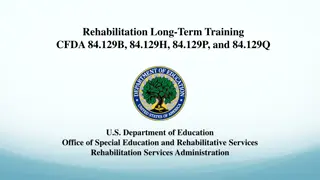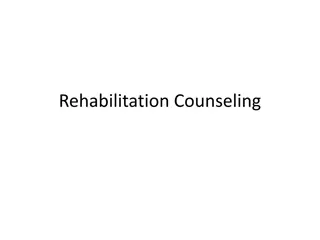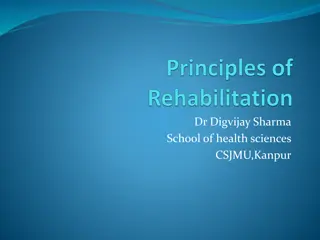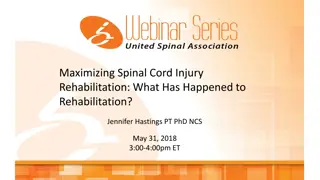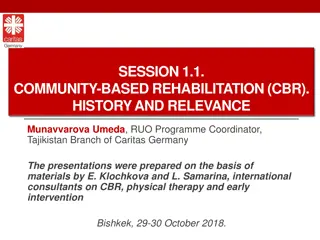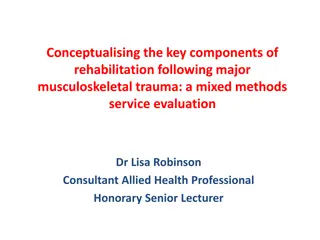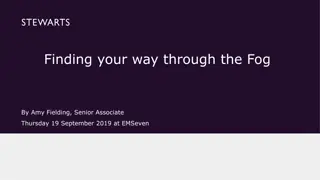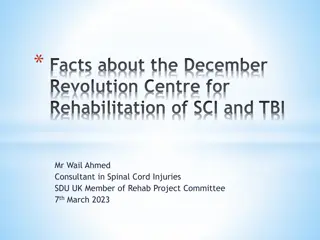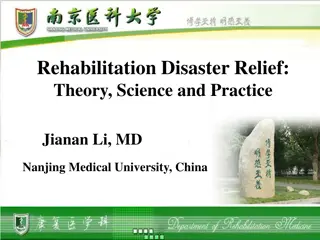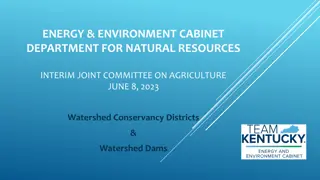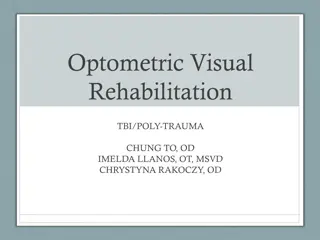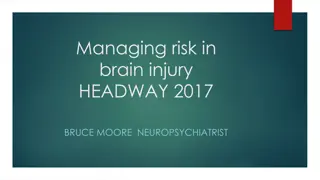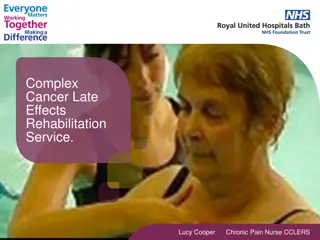Basics of Injury Rehabilitation: Key Concepts and Strategies
Understanding injury rehab is crucial for athletes. Injuries happen, but most are non-life-threatening. The goal of rehab is to safely return athletes to activity through steps like controlling swelling, managing pain, restoring range of motion, and building strength. Additional goals include daily, weekly, and monthly targets for long-term recovery. Addressing areas like first aid, pain control, ROM restoration, and strength building are vital parts of the rehab process.
Download Presentation

Please find below an Image/Link to download the presentation.
The content on the website is provided AS IS for your information and personal use only. It may not be sold, licensed, or shared on other websites without obtaining consent from the author. Download presentation by click this link. If you encounter any issues during the download, it is possible that the publisher has removed the file from their server.
E N D
Presentation Transcript
BASICS OF INJURY REHAB David Smith MS ATC Sports Medicine 1
Everybody always tries to prevent injuries, but they will happen Very few tend to be life threatening Most are not serious and have a rapid recovery Since sports are competitive it makes it necessary to be aggressive in rehab Thin line between holding the athlete back or returning the athlete too soon A mistake in judgment may hinder the athletes return in the long run
Goal of Rehab To return the injured athlete back to activity as soon as safely possible
Goals of Rehab Provide First Aid and control swelling Control Pain Restore ROM Restore Strength, Endurance and Power Reestablish Neuromuscular control and regain balance Maintain Fitness levels Functional Progression Functional Testing
More Goals Additional Goals for Long Term Rehab are: Daily Goals Weekly Goals Monthly Goals
First Aid and Control Swelling How the injury is managed initially is essential to return Must control the swelling at the time of injury RICE
Controlling Pain The extent of pain varies Severity of Injury Athlete s individual pain levels How in-depth the surgery may have been Control pain using RICE Ice, Heat, Electrical stimulation ?Meds?
Restore ROM Must get ROM back ASAP after surgery Ways to get ROM back Active On your own Passive Someone else doing it for you Usually it is painful process to get full ROM back
Restore Strength, Endurance and Power Isometric Exercise Isotonic or Progressive Resistance Exercise (Concentric and Eccentric) Normal weight lifting Isokinetic Exercise (later in rehab) Cybex, Biodex Plyometric Exercise Spinning
Reestablish Neuromuscular Control This is the brains attempt to teach the body conscious control of a specific movement. Following injury, rest and immobilization the CNS forgets how to put information together. Need to reeducate the body since it hasn t been used Contraction, Balance, Reaction
Regain Balance Vital to re-teach the Neuroreceptors in the body part that is injured If you fail to address balance problems this may predispose the athlete to reinjury
Maintain Cardio Fitness This can be difficult depending on immobilization Bike UBE Pool Treadmill Elliptical Stairmaster
Functional Progression The purpose of any Rehab program is to restore normal function following injury These involve a series of gradual progressive activities to assist in return to sport If NO pain then can move on to more advanced skills
Functional Progression Example: Walk Jog/Walk Jog Run/Jog Run Sprint Acceleration/Deceleration Lunges Shuffles Carioca COD
Functional Testing Agilities Shuttle run, Figure eights, Carioca, Fwd/Bkwd, Side to side, any other sport specific movement Vertical Jump Broad Jump Hopping for Time (Jump Rope) Test for Quads and Hamstring Strength Are they 70%,80%,90% of unaffected leg?
Return to play Do they have to see the doctor to get clearance? When do you let the athlete play again? How do you know? Is there a test?
Criteria for a Full Recovery The decision to return to play is the final step Doctor, ATC, Coach and Athlete should all be involved in clearing the athlete to play Doctor has final decision Doctor will listen to the rest of the Primary sports Med team to get feedback All should be confident in the return to play Gradual Return To Play Athlete needs to regain confidence playing

 undefined
undefined





